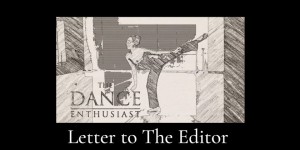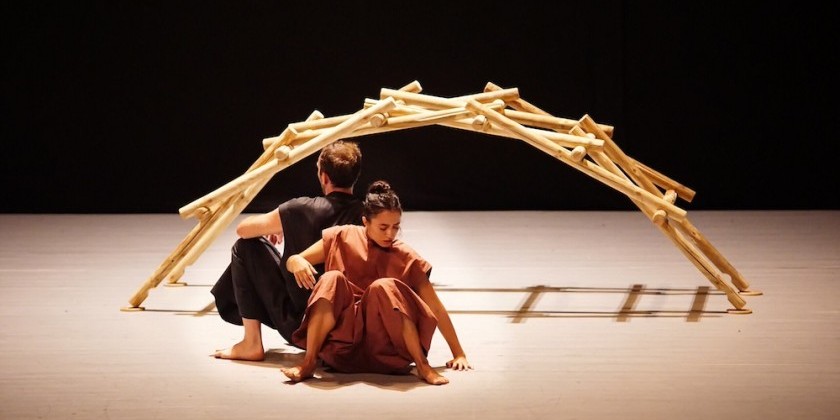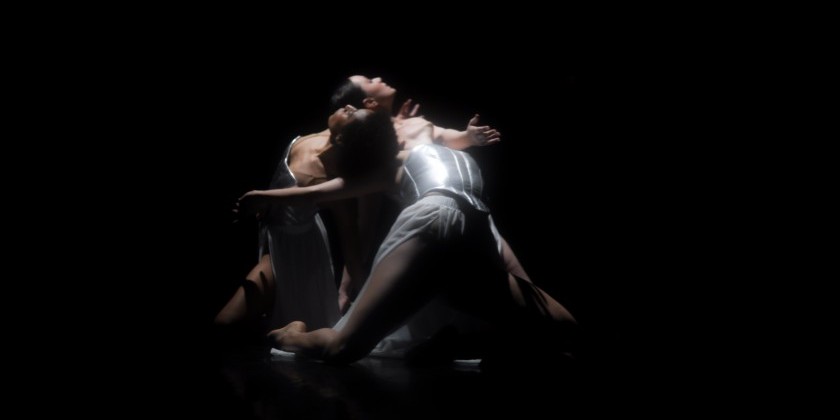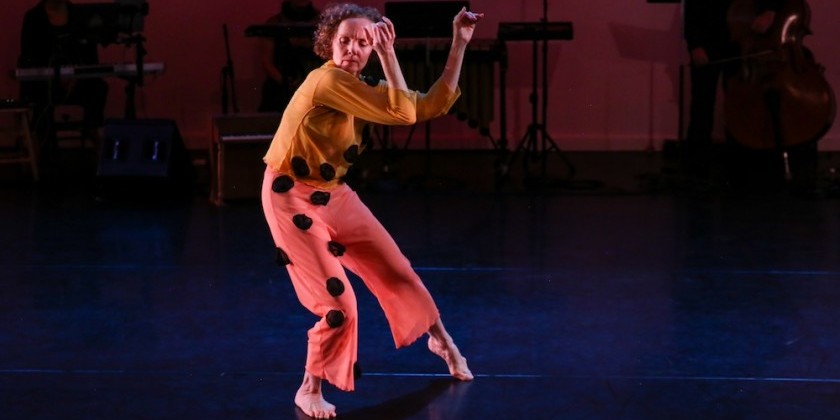LETTERS TO THE EDITOR: Proceeding With Caution: Advocating for Yourself as the Dance World Returns — November 25th, 2020
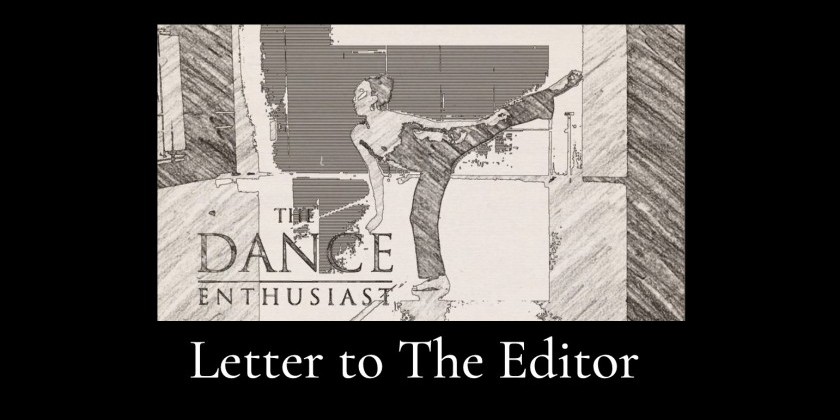
Anna Pinault is a dancer and dance educator based in NYC.
"I have written an article calling for self-advocacy and intentionality from dancers as bits and pieces of dance as we knew it begin to return. In the article I also pose some questions that artists can be asking during this time to stay prepared and not caught off guard by these unprecedented circumstances."
WEBSITE: www.annapinault.com
INSTAGRAM: @annapinaultdancer
PATREON: www.patreon.com/user?u=29621256
Proceeding With Caution:
Advocating for Yourself as the Dance World Returns
The COVID-19 pandemic has offered the dance world an unprecedented opportunity to rebuild itself. As America was brought to its knees by this crisis, the infrastructure for dance creation and performance was shut down. The dance world as we knew it came to a complete halt. (Note: the areas of dance and movement arts that have remained alive during this time are those spaces outside the mainstream, product-based, capitalistic, and Westernized infrastructure I refer to here and throughout this article as the “dance world”.)
It is November 2020 as I write this, and at this moment we find ourselves slowly and cautiously creeping forward toward some form of reopening. In New York, many artists have held rehearsals in outdoor spaces. There have been socially distanced performances in all kinds of unconventional locations. And some dance studios have even begun to experiment with reduced-capacity in-person classes. But the conversations of individuals and dance organizations aren’t just centered around reopening, negotiating face masks, or returning to a state of “normal but with tighter cleaning protocol”. Right now folks are asking big questions about how we might reshape the dance world as a whole.
In keeping with US current events – civil rights protests prompted by the continual killing of Black people by police, and the sudden mass-unemployment impacting millions of Americans – the most popular talking points in this conversation of restructuring seem to be the rampant racism built into hierarchies of the dance world, and the lack of funding available for smaller creators and insultingly low wages for artists.
To be clear, these issues have been brought up before. This is not the first time that major dance institutions have held meeting after meeting after seminar after workshop in an attempt to decolonize and decentralize themselves. So what makes this time any different?
The difference is that instead of trying to rebuild the engine of a train that is barreling down the tracks at high speed, the train has actually come to a stop. There
is no longer a precise timetable or clock to race against, and there are no longer passengers who would be annoyed by a pit stop to clean the wheels and reorganize the luggage before setting on again. In fact if the train hadn’t stopped, sooner or later it would have reached the end of the tracks and gone flying over the cliff to its demise.
At risk of beating this train metaphor to death, what I’m trying to say here is that, because of this universal pause, we have been afforded the time and space we need to examine our infrastructure properly, as well as a rare opportunity to relaunch. The forced cutoff of the dance world as we knew it has the potential to be one of the best things to ever happen to dance. That being said, we cannot sit passively by and wait for those at the top of the pile to sort it out. If we do, things will undoubtedly go back to how they were before – unsustainable, inequitable, and scarcity-driven.
We must remember that we – the artists – shape the field of dance by what we allow; dance institutions work for us, we do not work for them. In the pre- pandemic version of the dance world, however, it was extremely difficult to wield this power, primarily for fear of losing job opportunities or visibility. But thanks to this recent shut-down, the playing field has been more or less leveled. I speak in all seriousness when I say: Nobody has work anyway, so what have you got to lose? If there were ever a time to radically advocate for yourself and set new expectations, it would be right now. We have some leverage here – let’s not waste it! Because when you advocate for yourself you’re also advocating for your fellow dancers, and you’re laying a better foundation for them to speak up as well.
But the opposite is also true. When you take a job that pays little or nothing because you’re excited to dance again after months, you make that part of the status quo. When you accept poor or unsafe working conditions in order to pull off a socially distanced performance, you make that part of the status quo. When you hire the same ten white dancers to teach at your virtual dance intensive, you make that part of the status quo. I urge you to be intentional about your return to the dance world. As you return to it, you are building it back up around yourself. Ask the questions you were once afraid to ask, and demand transparency from the people and institutions around you.
Of course it is also important to remember that we are still in the midst of a pandemic. COVID-19 still remains a threat, and as I write this, case numbers in the US are seeing another spike. New York has recently begun to scale back on some of the reopening measures we’ve seen thus far, with the latest update being a 10pm curfew for already limited indoor dining. It is not yet clear what this new wave will mean for the dance world, but what we do know is that this pandemic poses a whole new set of variables for dancers to navigate. It can be difficult to know where to begin, and these new variables have the potential to catch us off guard. So yes, as we begin our return to projects and performances, radically advocating for ourselves and for a better dance world, we must continue to ask the same vital questions we asked before this pandemic – Will I be paid for this gig? What are your expectations for me contributing to the choreographic process? Is the theater wheelchair accessible? Is there a cultural advisor being consulted for this project exploring Japanese traditions? Etc. But on top of that, we must also prepare ourselves to pose new COVID-related questions and to stand up for ourselves as artists navigating this new and difficult terrain.
Here is a list of questions to ask your director when considering (and throughout the process of) a new project.
-
What are the conditions under which this production will stop? If production stops, is there a plan to reschedule? If production stops will I be paid/will my pay be reduced?
-
What are the requirements for COVID-19 testing? Is there a budget for this? (i.e. Will my tests be paid for if you require a rapid test and I don’t have insurance? Will my time getting tested, as well as travelling to and from the testing site, be added to my hours and compensated for?)
-
If I test positive for COVID-19, will I be paid/will my pay be reduced? If I stay home from a rehearsal out of caution for COVID-like symptoms, will that time be deducted from my pay?
-
How are the rehearsal and performance spaces being cleaned and how often? Will masks and/or other PPE be provided? Will I be compensated for my purchase of PPE?
-
How much time, if any, will be allotted for warmup? (Remember that our bodies have all been affected by this pandemic in different ways.)
-
Will there be partnering in the choreography? At any time will I be required to be within six feet of other dancers with or without a mask?
-
Will I be required to self-quarantine at any time during this process? Will this time be compensated for?
-
Who should I speak to if I am uncomfortable with anything about the rehearsal or performance environment?
The dance world has been sick for a while now, and although this pandemic might feel like a death sentence, we have the opportunity turn this time of uncertainty into a time of revolution and rebirth. And, like all revolutions, this doesn’t start with major institutions; it starts with you and me. It starts with rejecting hustle culture and the urge to rush back into old structures we are nostalgic for. It starts with challenging the capitalistic and Eurocentric values that we have all internalized. It starts with asking uncomfortable questions and being willing to answer them when they are asked of you.
Instead of waiting for major dance institutions, studios, or theaters to figure it out so we can return to the comfort of the structures they put in place for us, let’s ask them to follow our lead. Let’s take our beloved craft out of their hands and, as Alvin Ailey said, deliver it back to the people. No more popularity games to play, no more fake ladders to climb up.
This work will be hard, but there is no rush. Right now we have the unusual gift of time. So once again I say this: Be intentional about your return to the dance world. What you do now has the power to reshape the future.






